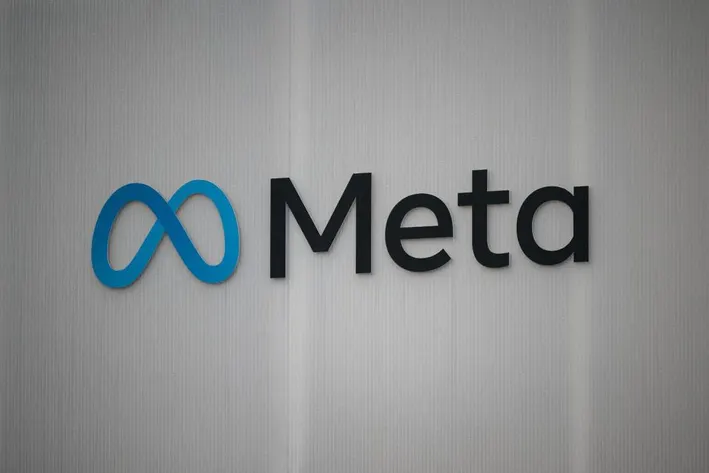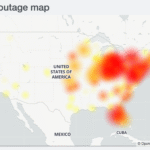Click here to buy secure, speedy, and reliable Web hosting, Cloud hosting, Agency hosting, VPS hosting, Website builder, Business email, Reach email marketing at 20% discount from our Gold Partner Hostinger You can also read 12 Top Reasons to Choose Hostinger’s Best Web Hosting
The sudden meta ai layoffs announcement — roughly 600 roles in Meta’s AI organization — has left engineers, researchers, and product teams scrambling for answers and options. For people inside Meta it means immediate uncertainty about project ownership and career direction; for partners and customers it raises questions about product roadmaps and the future of Meta’s open-source Llama work. This article explains exactly what happened, why leadership says it was needed, and — most importantly — what practical steps employees, hiring teams, and industry observers should expect next.
Among the sea of options, Mag-Safe Wireless Charger, the Magnetic Wireless Charger 15W stands out, especially for Apple users. Whether you’re an iPhone enthusiast or rely heavily on AirPods, this charger promises to simplify your life. But is it worth it? Let’s break it down.
What happened
Meta confirmed cuts of about 600 positions across its AI organization, affecting legacy research (FAIR), product-related AI groups, and AI infrastructure teams.
The company says the newer, elite research unit often referred to as the TBD Lab / Superintelligence Labs (where Meta invested heavily and recruited Alexandr Wang) is not part of these cuts.
The move follows a rapid year of hiring and a major investment in Scale AI earlier in 2025, which brought Alexandr Wang to Meta and tightened Meta’s ties to a key data-labeling partner.

Why this matters beyond headcount
What it means for research, products, and the talent market
Most headlines summarize numbers. The real shifts are structural:
1. Research vs product focus shifted.
Meta’s AI effort has been split between long-term research (FAIR-style) and product-driven model work. The cuts appear concentrated in legacy research and infrastructure roles while the “need-it-now” product and elite labs continue to receive resources. That signals a company pivot from broader curiosity-driven work toward fewer, high-priority product streams.
2. Open-source posture may see tactical change.
Meta’s open-source approach to Llama helped it gain developer mindshare. But open-source leadership requires sustained research bandwidth. If research teams shrink, the cadence of major public releases or deep research audits could slow, even if product-facing Llama integrations continue.
3. Talent-market ripple effects.
Experienced researchers and engineers exiting Meta immediately expand talent supply. Expect short-term hiring activity from startups, academia, and other cloud labs — and more competition for senior AI staff who prefer smaller teams or startups where they can shape direction.
What are the Better Sides of Tech Layoffs
A fresh angle: why this is as much about team shape as cost
Most corporate layoffs are read as cost-cutting. This one is better framed as reshaping. Leadership told staff the point was to make teams more “load-bearing” — fewer people, wider scope per role, faster decision loops. That implies four operational changes:
Smaller cross-functional squads that embed research, infra, and product engineers together, rather than separate siloed labs.
Faster product experimentation cycles with direct measurement of model impact on user metrics.
Selective hiring at the highest-priority nodes (e.g., model training, safety, model evaluation) rather than broad hiring across research areas.
Internal redeployment as the first path: many affected employees are being encouraged to apply for other roles within Meta.
This is important because it means Meta is not necessarily shrinking AI capability overall — it’s concentrating it. For the outside observer, that suggests more focused, faster product launches from Meta in the near term, even if certain exploratory research tracks slow down.
How the Scale AI tie-in changes the picture
Meta’s large investment in Scale AI earlier in 2025 — and Alexandr Wang’s move — rewired where Meta gets training data and talent. That deal was intended to speed up model development and give Meta better control over labeled data pipelines. Cutting broader research roles while doubling down on high-impact lab hires suggests Meta prefers to control critical data and modeling pipelines centrally, then move fast to productize. The Scale AI partnership therefore acts as a force multiplier for the parts of the org Meta keeps. Business Wire
Practical implications (who should do what)
If you’re an affected employee:
Apply to internal roles immediately — Meta is encouraging internal moves and many seats are likely open.
Publish or package any research code, data artifacts, and model checkpoints with clear README and provenance; public or private repos make your work easier to transfer or open-source.
Update your portfolio with short case summaries that show product impact (metrics, latency, cost savings).
If you’re a product leader at Meta or partner:
Revisit roadmaps: identify features that depend on deep research vs. those solvable with engineering and existing models.
Prioritize integrations with core models (TBD Lab outputs) to reduce dependency on long-term experiments.
If you’re a startup or hiring manager:
Expect a wave of available senior ML research talent — rethink senior IC and small-team offers; many will prefer roles with autonomy and clear product accountability.
Consider short-term contractor or advisory arrangements for teams needing specialized research expertise.
A mini case study: what happens to an LLM research project mid-shift
Imagine a FAIR team working on a new reasoning benchmark and a separate TBD Lab team building a deployment-ready model. Under the old org chart, FAIR would refine theory while TBD would adapt findings later. After this reshuffle, the project may be absorbed by a small squad inside TBD Lab that must deliver a product-quality model quickly. The research ideas still exist, but the timeline shifts: fewer deep dives, more experimental A/B results and rapid iterations. That can be good for users who want features today, but it reduces open-ended discovery.
Key Takeaways
Meta cut ~600 AI roles, focused on legacy research, product AI, and infrastructure, while its elite TBD Lab remains hiring.
This is a structural reshuffle, not only a headcount reduction: Meta is concentrating talent into smaller, higher-impact teams.
Scale AI deal matters: Meta’s investment and hiring of Alexandr Wang reshaped where data and model expertise sit, and likely influenced the reorganization.
Short-term product velocity may rise while exploratory research bandwidth narrows.
Talent market impact: expect increased availability of senior AI researchers and engineers; startups and labs should prepare targeted offers and attractive small-team roles.
What to watch next (forecast and signals)
Product cadence — watch for a spike in product-level model updates and adtech integrations over the next 3–6 months.
Papers and open-source releases — a slowdown in FAIR-originated papers or public model releases would confirm reduced exploratory capacity.
Hiring patterns — if Meta posts senior IC and engineering roles for TBD Lab and model infra, the pivot is real; if not, this could be early retrenchment.
FAQs (People Also Ask)
Q: How many jobs did Meta cut in its AI unit?
A: Reports indicate about 600 roles were cut across research, product AI, and infrastructure teams. Reuters reported the figure based on company confirmation.
Q: Will Meta’s Llama models be affected?
A: The engineering and product teams that maintain Llama-based deployments may continue, but cuts in legacy research could slow the cadence of deep experimental releases or research papers. The TBD Lab (working on next-gen models) was reported unaffected. Reuters
Q: Is Meta still investing in AI?
A: Yes. Earlier in 2025 Meta made a major investment in Scale AI and recruited its CEO to bolster data and model pipelines — a move that continues to shape Meta’s AI strategy. Business Wire
Q: What should affected employees do first?
A: Apply for internal roles, secure references, package code and research artifacts clearly, and prepare short, metrics-focused case summaries showing model/product impact.
Conclusion
The meta ai layoffs headline packs numbers, but the full story is organizational: Meta is compressing broad AI efforts into a tighter set of high-priority teams that feed product launches and centralized model development. That shift will likely speed some projects but reduce the volume of exploratory research leaving Meta. For employees, the immediate need is to secure internal moves or prepare market-ready portfolios. For the industry, these cuts mean fresh talent on the market and a clearer signal that big tech now prizes small, highly focused teams that can ship measurable product outcomes.
If you work in AI and want practical next steps — check job boards, package your work for transfer, and prepare short case studies that show measurable impact. For readers who follow corporate AI strategy, watch Meta’s next quarter for signs of faster product rollouts or fewer public research outputs.
Now loading...






